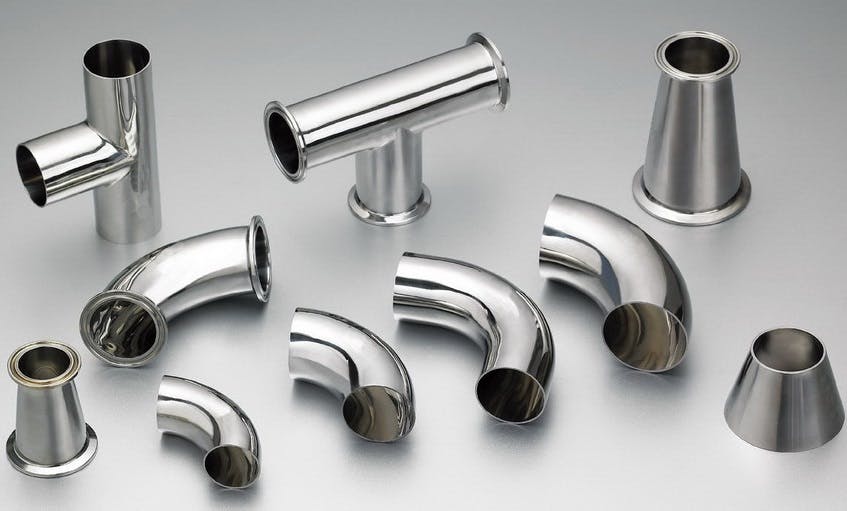What Are Sanitary Fittings and Why Are Tri-Clover Fittings Used With Them?

The world of process piping and fittings is a highly complex one with many different considerations to take into account. That being said, this article will serve as an introduction to sanitary fittings, outlining what they are and how they are used.
What Are Sanitary Fittings?
Sanitary fittings are components used almost exclusively in the food, beverage, pharmaceutical, and personal care industries. Sanitary fittings were developed for these industrial purposes because they are removable and easily cleanable. One can either dismantle a system to clean sanitary fittings or use a process known as Clean in Place (CIP).
Sanitary fittings work by limiting potential entrapment areas where bacteria could accumulate. Moreover, these types of fittings are designed to be highly corrosion-resistant, thereby eliminating another source of potential health hazards.
Furthermore, sanitary fittings do not have any pockets, tight bends, or even threading. Such design specifications reduce or even eliminate the parts of the fitting that are very difficult to clean, thereby ensuring that the system they are used in has fewer chances of becoming contaminated. Additionally, sanitary tube fittings can be found in specific stainless steel alloys to ensure that they can operate in harsh conditions.
Surface Finish and Roughness Average (Ra)
Possibly the greatest distinguishing feature of sanitary fittings from other types of fittings is what is known as surface finish. If you were to look at stainless steel alloys through a microscope, you would see tiny peaks and valleys. These are places that can harbor bacteria over time hence causing potential sanitary problems in the piping system.
Sanitary fittings are polished and smoothened to a point where the microscopic peaks and valleys are smoothened out and, in some cases, even eliminated. By finishing the surface in this manner, the chances of bacterial accumulation become greatly reduced.
Both the food and pharmaceutical industries require surface-finished sanitary fittings for their piping processes. Moreover, pharmaceutical applications require much smoother finished sanitary fittings, with a roughness average of 20 Ra. Meanwhile, sanitary fittings used in the food industry are required to have a roughness average of about 30 Ra.
Tri-Clover Fittings
In many food and beverage industries, sanitary fittings are required to be of a certain kind known as Tri-Clover sanitary fittings, also known as Tri-Clamp sanitary fittings. These fittings are designed to be cleaned in place (CIP) meaning that the piping system does not need to be dismantled to be cleaned.
To create a sanitary connection for your food or beverage piping process, three main things are needed: two tri-clover sanitary fittings and one tri-clamp along with a gasket. This connection is very easy to dismantle and put back together, meaning the system can be regularly cleaned to avoid bacterial accumulation and keep the standards of hygiene up to par.
Conclusion
Hygiene standards are very important for various food, beverage, and pharmaceutical process to follow for the health and safety of everyone. For this reason, sanitary fittings and tri-clover fittings have been developed to reduce to chances of dirt and bacteria contaminating the process. Moreover, these fittings can be easily removed and dismantled so that regular manual cleaning can take place.